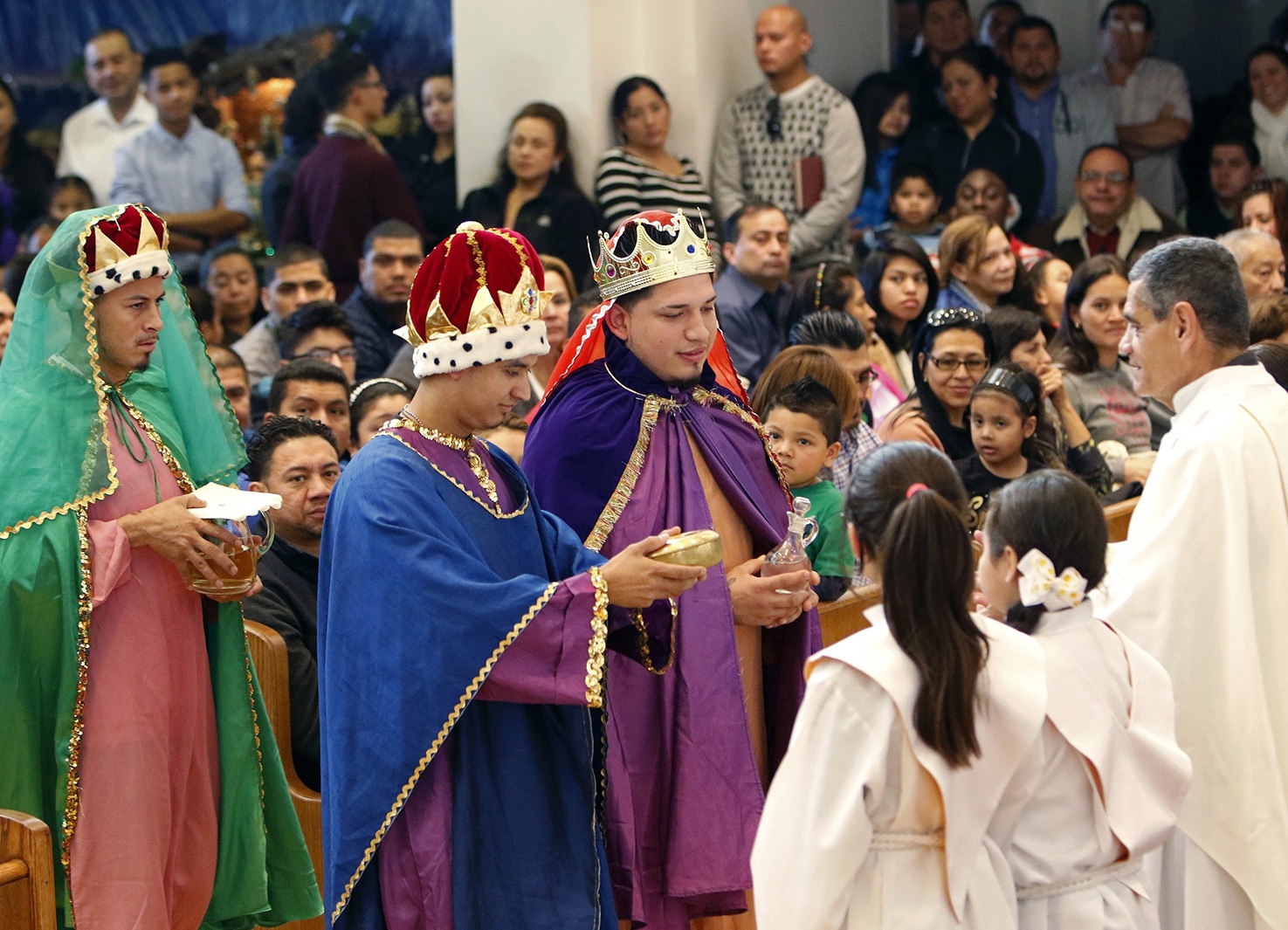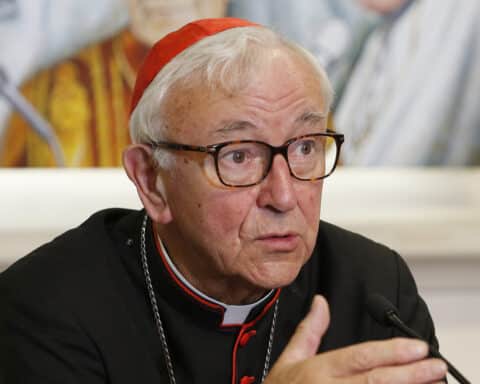(OSV News) — After preparing for the birth of Jesus with posadas, live Nativity scenes, Midnight Masses and Nochebuena (Christmas Eve) traditions, thousands of Latinos in the United States will continue the Christmas season by celebrating Epifanía, or Epiphany.
Epifanía, or “the manifestation of the Lord,” celebrates Jesus making himself known to the whole world, said Alejandro Aguilera-Titus, assistant director of Hispanic affairs for the U.S. Conference of Catholic Bishops’ Secretariat for Cultural Diversity in the Church.
In many parishes, there are reenactments of the “Wise Men from the East” prostrating themselves before the child in Bethlehem, as the Gospel according to St. Matthew describes. These Three Kings or Magi — traditionally known as Melchior, Gaspar (or Caspar) and Balthasar — remind everyone of the importance of pausing to contemplate the love and mercy of God made flesh in the Christ Child.
When the figures of the Magi approach the manger, it becomes clear — especially to the little ones in the house — that Jesus is “the king of kings,” Aguilera-Titus said.
“We come together as a community,” said Wanda Vásquez, director of the Office of Hispanic Ministry at the Archdiocese of New York. “We celebrate in prayer, reflecting on the birth of our Jesus — anticipating the Magi’s coming.”
Focus on Jesus’ birth
Vásquez said that in Puerto Rico and many parts of the Caribbean, all traditions focus on Jesus’ birth, rather than on characters like Santa Claus or elves.
While Christmas Eve and Christmas center on Christ’s birth, gifts are traditionally reserved for Epiphany. This tradition was inherited from Spain, and thousands of Catholics from Latin America celebrate it differently. Some children put shoes under the tree, others under beds, and even food and water are left for the Magi’s camels. What these traditions have in common is the centrality of the Christ Child in the manger, prompting contemplation of how God’s promise is fulfilled.
The little doll
As part of the Epiphany tradition, the Rosca de Reyes, an ornate circular loaf with candied fruit and a plastic figure of a child representing the newborn Jesus, is shared. “Whoever gets the little doll has to make the tamales on Candlemas Day,” explained Aguilera-Titus.
“For many,” Vásquez said, “Christmas doesn’t end until Feb. 2, with the presentation of the Lord at the temple,” also known as Candlemas.
In addition to the opportunity to delve into the words of the Bible, Aguilera-Titus said, Epiphany celebrations are ways to make “Christian living more present in the home and within the community of faith, in the temple.”
“Everyone is looking for God from their culture, from their tradition,” said Humberto Ramos, parish life director at Epiphany Church in South El Monte, California.
He estimates that about 2,000 people — not including children — will come to celebrate Epiphany, the parish’s patronal feast, with a big festival where people dressed as kings bring candy to the children.
He reflected on the gifts brought to the baby Jesus, “incense for God, gold for the King, and myrrh for the one who will die,” as said the fifth-century doctor of the church St. Peter Chrysologus.
In addition to the traditional rosca, Ramos said, his parishioners observe another Mexican tradition, the levantada, or lifting, of the Christ Child from the crèche. A godfather or godmother — typically those who found the baby in the rosca — would dress the image of Baby Jesus in ornate clothes so that it will be ready on Candlemas Day, where it will be blessed and “lifted” from the crib amid prayers.
“It’s what we learned from our parents, in our homes, and it’s something that leads to having an experience and an expression of God, of Christ in your home,” Aguilera-Titus said.
Celebrations in the United States
The date of Epiphany is Jan. 6 — 12 days after the Nativity — but, in the United States, the celebration of Epiphany will be observed in 2024 on Sunday, Jan. 7.
Father Jose Cruz Alvarez, pastor of Sacred Heart in the South Bronx, New York, told OSV News that although in the past the pandemic had curtailed many of the typical celebrations, his parishioners were looking forward to reviving their Epiphany traditions in 2023. With the support of a sponsoring parish, the “kings” were able to hand out gifts at the Mass for the children in the neighborhood. This upcoming Christmas season, the sponsoring parish will provide a smaller token — possibly gloves, scarfs or hats — to the children, which will include 300 children from the parish’s religious education program.
The physical gifts during the Christmas season — Epiphany included — are a reminder that “in receiving, I am called to give a little bit of what God himself has given me,” said Father Cruz.





